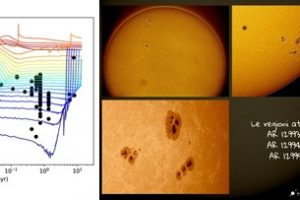Morphology, dynamics, and star formation in the Cone Nebula and NGC2264

Several questions about the star formation process are still debated. For instance, we know that stars form from the gravitational contraction of clouds of gas and dust, called “molecular clouds,” since they are mainly made of molecular hydrogen. Mainly thanks to observations from the Herschel satellite, we also know that most star formation occurs in long filaments embedded in these
» Read more








